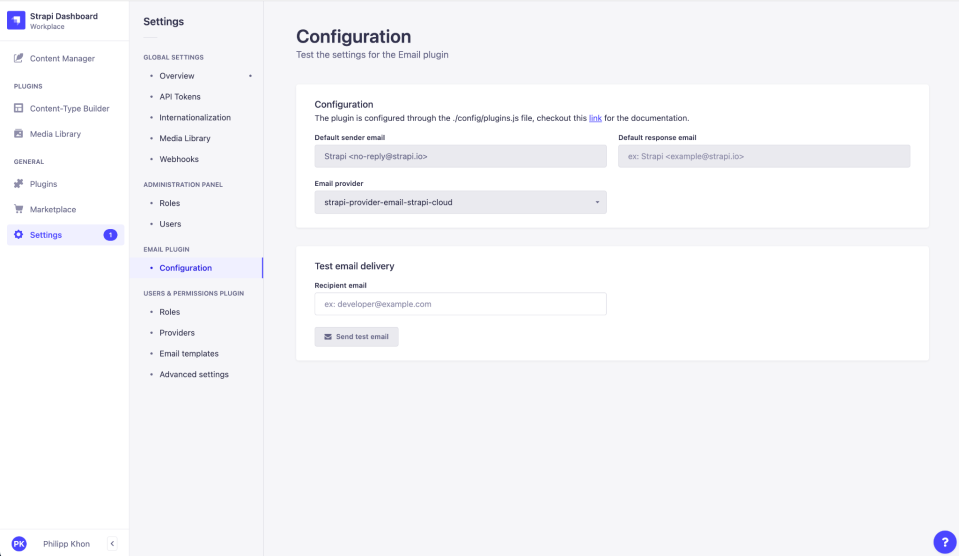Headless CMS startup Strapi launches Strapi Cloud
Strapi is releasing its cloud-hosted version of its popular content management system. With Strapi Cloud, developers don’t have to manage their own servers, as the company handles hosting for you. This way, you can focus on the front-end code.
If you’re not familiar with Strapi, the company has developed one of the leading open source headless CMS. A headless architecture means that the back end operates separately from the front end.
At its core, Strapi is a CMS with all the usual features that you can expect from a CMS. Content writers connect to an admin interface, write content, upload media files, create pages and more. Everything is stored in a database.
But unlike regular content management systems, Strapi doesn’t generate webpages directly. Instead, content is accessible through a GraphQL or RESTful API. Front-end developers can then use these APIs to fetch content and display it.
This decoupled architecture offers some flexibility as you can use different front-end frameworks like Gatsby, Vue.js and Nuxt.js. A single Strapi instance can also be used to distribute content across different platforms. For instance, if you are working for a company that has a desktop app and a mobile app, you can fetch new content from Strapi in these apps directly.
As for Strapi hosting, developers currently run their own Strapi instances on a third-party platform-as-a-service provider like Heroku, DigitalOcean App Platform or Platform.sh. Some developers also start with a vanilla virtual private server on Amazon Web Services, Microsoft Azure or Google Cloud.
With Strapi Cloud, small and medium companies can choose to pay Strapi to host their instance. The startup has tried to make Strapi Cloud as flexible as possible so that you can switch from one hosting provider to another or customize your infrastructure to your needs.
By default, Strapi Cloud includes a server, a database, a CDN and an email service. But if you want to use an external database, another CDN or email provider, you can replace Strapi Cloud’s default options with your own services.

Image Credits: Strapi
Behind the scenes, Strapi Cloud uses a PostgreSQL database, which means that you can transfer your existing PostgreSQL database to the new cloud platform. When it comes to email and CDN, Strapi Cloud relies on SendGrid and Cloudflare, respectively.
The company still has a long list of items on its roadmap. For instance, Strapi Cloud servers are all hosted in the New York region for now. But customers will soon be able to select another region.
Similarly, the Strapi back-end interface and the API endpoint can be accessible through a subdomain of Strapi’s website. In the future, this domain name will be customizable, which could be particularly useful for digital agencies.
For now, only a limited set of users will be able to sign up to Strapi Cloud. Only 50 people will be able to start a free trial every day. People on the waitlist will also receive invites.
There are two plans for Strapi Cloud. The first plan starts at $99 per month, with some generous asset storage and bandwidth limits (100,000 CMS entries, 1 million API requests, 150 GB in asset storage, 500 GB in asset bandwidth, etc.). There’s also a high-end plan with an audit log feature and a higher level of support that should satisfy the needs of bigger corporate clients.

Image Credits: Strapi

 Yahoo Finance
Yahoo Finance 